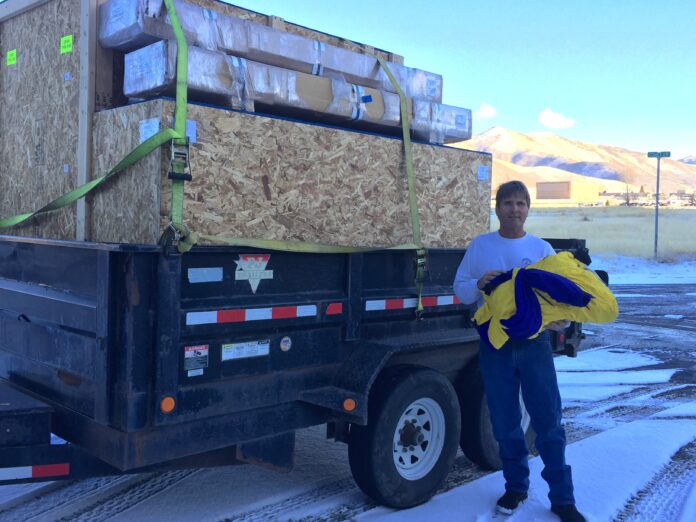
By Dana DuGan

“It’s not a small story anymore,” Bellevue resident Kirsten Shultz said last week.
And that was before the U.S. Army Corps of Engineers denied the Energy Transfer Partners’ permit to tunnel beneath the Missouri River for the Dakota Pipeline at the controversial site located on Sioux reservation land.
Shultz’s daughter, Koko Furlong, a Sage School student, helped spearhead a donation drive for coats and blankets for the Standing Rock water protectors. On Saturday, Hailey resident and owner of Sun Valley Hyperbaric, Phil Rainey, drove a truck and trailer to the Standing Rock Sioux Reservation with those donated goods plus a 2,000-pound yurt.
“The young people are doing good things,” Shultz said. “She was so inspired by Lexi DuPont’s posts and story (The Weekly Sun, Nov. 30). Koko decided to start collecting items––heavy winter coats, blankets. We were willing to ship but then found out Phil was taking a yurt there.”
Rainey had a long haul with his truck and trailer. The traffic to Standing Rock has intensified. Hailey resident Scott Miley loaned him a camper shell for his weeklong trip, and Rainey’s brother, Pat, loaned him the trailer. Wood River Valley residents Kevin and Tobi Travis donated the new 24-foot yurt, which was still in its box. Rainey’s contact at Standing Rock, a man named Bear, began building the base for the yurt at Oceti Sakowin before Rainey even arrived on Sunday afternoon.
This week, Standing Rock has experienced harsh weather typical for the region, with heavy snowfall and 40-mile-per-hour winds. Rainey said many people who came unprepared were struggling. He spent his first afternoon pulling a bus out of the snow. It had brought veterans, who all arrived without shelter or kitchen gear. Despite the hardships, the vets kicked into gear, walking onto the bridge to Turtle Island.
Rainey said donations of clothes and coats are plentiful but the need for such items as firewood, food and propane continues. Financial donations help with the infrastructure, such as paying for the porta-potties. There are some 10,000 people now encamped at Standing Rock.
“A lot of wooden structures are being built,” Rainey said. “They’re in it for the long haul, staying all winter. I’m looking at one right now that’s just 800 square feet.”
The practical issues are enormous. There are makeshift roads that have evolved. There is security, medic tents, and donation drop-off points.
“People are helping each other and it’s pretty interesting to see,” said Rainey. “A lot of people came to help, but have idea what to do, so they’re wandering around just experiencing the whole thing. And there are a lot of film crews.” Not a small, regional story any longer.
Rainey said the Natives are fairly tolerant of the outsiders.
“They’re making use of the attention,” he said. “They’ve been abused for so many years, and kicked around. That gets brought up quite a bit at the sacred circle gatherings. It’s a neat experience, watching the dancing and chanting. Most people give them space and let them do their thing and watch from the background. People are being polite.”
On Sunday, when it was announced that the permit was denied, a lot of cheers went up, but there was caution, too.
“They’ve heard this before,” Rainey said. “We’re hearing that the ETP says they’re not adhering to that. If they don’t, they’ll be fined $50,000 a day and just continue to work. We can’t see their worksite, but I’d imagine they are still doing what they can as quickly as they can before the ground freezes.”
